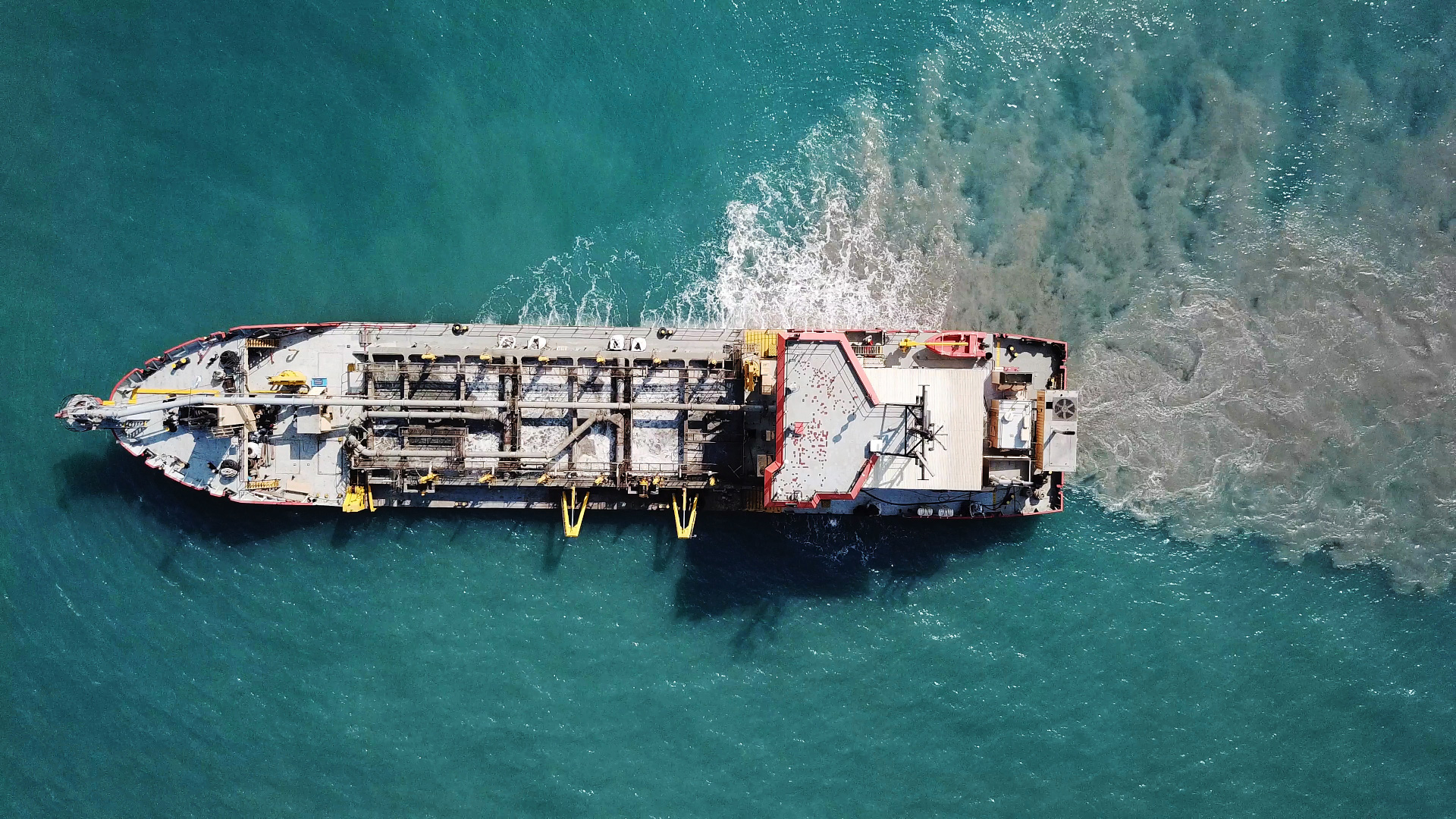Overview of Dredging Project Planning
Dredging is an essential operation for maintaining and expanding waterways, ports, and other aquatic infrastructure. It involves the removal of sediment and debris from the bottom of water bodies, ensuring navigational safety and environmental health. Proper planning in dredging projects is crucial for achieving efficiency, cost-effectiveness, and minimizing environmental impact.
B. Purpose of the Blog
This guide provides a step-by-step approach to planning a successful dredging project. It covers technical and logistical considerations at each stage, offers practical tips on managing risks, and highlights strategies to ensure your project’s success.
Stage 1: Feasibility Studies
A. Initial Site Assessment: Evaluating Dredging Needs
Before embarking on a dredging project, it is vital to assess the need for dredging. This includes evaluating sedimentation levels, ensuring navigational safety, and addressing environmental concerns. Key activities include:
- Bathymetric Surveys: Measuring the depth of the water body to understand sediment buildup.
- Sediment Sampling: Analyzing sediment to determine the type and amount of material to be removed.
- Environmental Impact Assessment: Evaluating potential impacts on local ecosystems and water quality.
B. Stakeholder Engagement: Building a Cooperative Environment
Engaging stakeholders early in the planning process is crucial for a successful dredging project. Key stakeholders include:
- Government Agencies: Ensure regulatory compliance and secure necessary permits.
- Local Communities: Address concerns and gather input from those directly affected.
- Environmental Groups: Collaborate to minimize environmental impact and enhance project sustainability.
C. Cost-Benefit Analysis: Weighing Costs Against Benefits
A comprehensive cost-benefit analysis is essential to determine the viability of the dredging project. This analysis should include:
- Project Costs: Estimating expenses related to equipment, labor, and environmental mitigation.
- Projected Benefits: Assessing potential economic, environmental, and social benefits.
- Feasibility Decision: Making informed decisions based on the balance between costs and benefits.
Stage 2: Detailed Project Planning
A. Project Scope and Objectives: Defining Clear Goals
Clear goals and objectives are the foundation of a successful dredging project. This includes:
- Defining Deliverables: Setting specific project goals and outcomes.
- Establishing Timelines: Creating realistic timelines and milestones for project tracking.
B. Technical Design and Specifications: Choosing the Right Methods
The technical design phase involves selecting the most appropriate dredging methods and designing a comprehensive plan. Key considerations include:
- Dredging Methods: Choosing between mechanical, hydraulic, or environmental dredging based on project needs.
- Dredging Plan: Detailing the area, depth, disposal methods, and equipment requirements.
- Environmental Considerations: Ensuring compliance with habitat protection, water quality standards, and regulatory requirements.
C. Logistical Planning: Coordinating for Success
Logistical planning is critical for the smooth execution of the project. Important aspects include:
- Permits and Approvals: Coordinating with local authorities to secure necessary permits.
- Equipment Mobilization: Planning the transport, storage, and site access for equipment.
- Communication Protocols: Establishing clear communication channels between the project team, stakeholders, and regulatory bodies.
Stage 3: Risk Management
A. Identifying Potential Risks: Preparing for Challenges
Every dredging project carries risks. Identifying these risks early is crucial. Common risks include:
- Technical Risks: Equipment failure, unexpected site conditions, and weather-related delays.
- Environmental Risks: Potential contamination, habitat disruption, and regulatory non-compliance.
- Logistical Risks: Delays in permits, supply chain issues, and labor shortages.
B. Developing Mitigation Strategies: Proactive Risk Management
To manage identified risks, it’s essential to develop mitigation strategies. This includes:
- Contingency Plans: Preparing for potential risks with backup plans.
- Monitoring Systems: Implementing systems to detect and address issues early.
- Flexibility in Planning: Ensuring the project plan can adapt to unforeseen challenges.
C. Insurance and Liability Management: Protecting the Project
Securing appropriate insurance and understanding contractual obligations are vital components of risk management. Focus on:
- Insurance Coverage: Protecting equipment, personnel, and environmental liabilities.
- Liability Management: Understanding and managing legal and financial exposure.
Stage 4: Execution
A. Mobilization and Setup: Getting Ready for Action
The execution phase starts with mobilizing resources and preparing the site. Key steps include:
- Site Preparation: Clearing, marking, and securing the dredging area.
- Equipment Mobilization: Bringing in equipment and personnel to the site.
- Final Checks: Conducting checks and balances before operations begin.
B. Dredging Operations: Monitoring and Adjusting
During dredging operations, continuous monitoring and adjustments are necessary. Key actions include:
- Progress Monitoring: Daily reporting and real-time adjustments to maintain quality.
- Safety Protocols: Ensuring worker safety and adhering to environmental protection measures.
- Stakeholder Coordination: Keeping stakeholders informed and adjusting plans as needed.
C. Project Monitoring and Quality Control: Ensuring Success
Quality control and ongoing monitoring are essential for project success. Focus on:
- Monitoring Systems: Implementing sediment control, water quality checks, and environmental impact assessments.
- Adjustments Based on Feedback: Making necessary adjustments based on monitoring results.
- Documentation: Keeping detailed records for compliance and future reference.
Stage 5: Post-Project Analysis and Reporting
A. Project Review and Reporting: Learning from Experience
After project completion, a thorough review is necessary. This includes:
- Outcome Analysis: Comparing project outcomes to initial objectives in terms of performance, budget, and timeline.
- Lessons Learned: Documenting successes and areas for improvement for future projects.
- Stakeholder Reporting: Providing final reports on outcomes, environmental impacts, and recommendations.
B. Site Rehabilitation and Environmental Restoration: Ensuring Long-Term Impact
Post-dredging site rehabilitation is essential to ensure long-term success. Key steps include:
- Site Assessment: Evaluating sediment stabilization and habitat restoration needs.
- Remediation Efforts: Implementing any necessary rehabilitation actions.
- Post-Project Monitoring: Continuously monitoring the site to address any long-term impacts.
Conclusion
A. Recap of the Importance of Thorough Planning
Thorough planning is the cornerstone of successful dredging projects. Addressing each stage—from feasibility studies to execution and post-project analysis—ensures project goals are met while minimizing risks and environmental impact.
B. Final Tips for Successful Dredging Project Planning
To achieve success in dredging projects, focus on adaptability, clear communication, and proactive stakeholder engagement. Continuous improvement in dredging project management practices is key to navigating the complexities of these operations and achieving long-term success.
